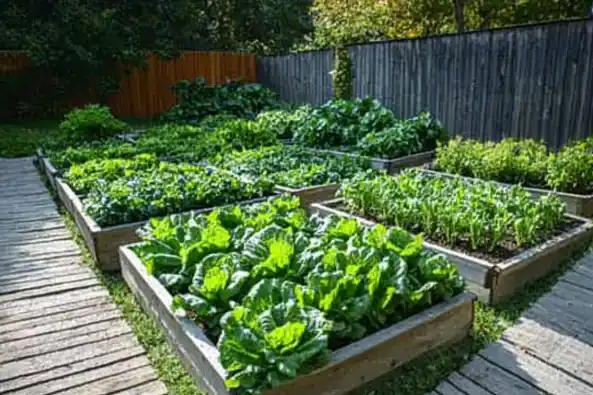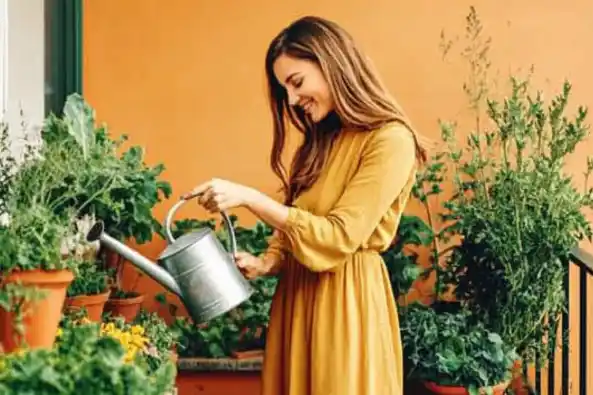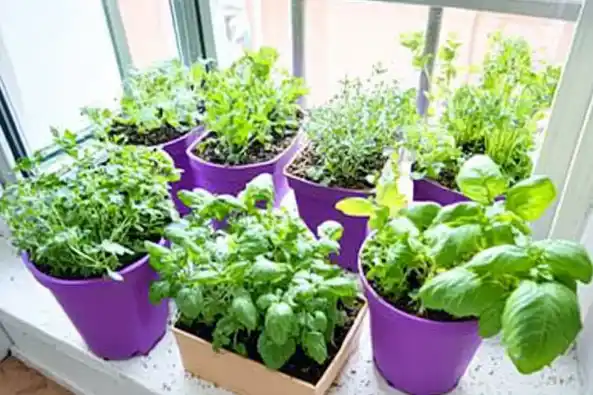Creating a thriving herb garden at home is an enjoyable and rewarding experience. Whether you have a large backyard or a small balcony, planting your herb garden provides fresh flavors for your kitchen and therapeutic benefits for your life.
Getting Started with Your Herb Garden
Why Grow Your Own Herbs?
Growing your own herbs ensures a steady supply of fresh ingredients for cooking, teas, and natural remedies. It’s also a cost-effective and environmentally friendly way to reduce grocery expenses while enjoying pesticide-free produce.
Benefits of a Home Herb Garden
- Accessibility: Have fresh herbs at your fingertips anytime.
- Health: Enjoy nutrient-rich, chemical-free greens.
- Aesthetic Appeal: Herb gardens add beauty and fragrance to your home or garden space.
Choosing the Right Herbs
Annual vs. Perennial Herbs: What to Plant
- Annual Herbs: Basil, cilantro, and dill complete their life cycle in one season.
- Perennial Herbs: Rosemary, thyme, and oregano return year after year with proper care.
Easy-to-Grow Herbs for Beginners
Begin with low-maintenance herbs such as parsley, chives, and mint. These herbs thrive in various conditions and are forgiving to beginners.
Best Herbs for Cooking, Medicinal Use, and Aesthetic Appeal
- Cooking: Basil, thyme, and oregano.
- Medicinal: Chamomile, lavender, and sage.
- Aesthetic: Purple basil, flowering chives, and creeping thyme.
Planning Your Herb Garden

How to Choose the Perfect Location
Select a location that receives at least 6-8 hours of sunlight daily. Ensure it has good drainage and is protected from harsh winds.
Designing Your Herb Garden: Raised Beds, Pots, or In-Ground
- Raised Beds: Ideal for controlling soil quality and drainage.
- Pots: Great for small spaces and flexibility.
- In-Ground: Best for larger gardens with fertile soil.
Companion Planting for Herbs
Pair herbs that benefit each other. For example, basil thrives near tomatoes, while mint deters pests when planted around cabbages.
For indoor herb ideas, check out 10 Herbs You Can Cultivate in Water Indoors All Year Round.
Preparing for Planting
What Type of Soil Is Best for Herbs?
Herbs prefer well-draining soil with a pH between 6.0 and 7.0. Enrich the soil with organic compost for added nutrients.
How Much Sunlight Do Herbs Need?
Most herbs require full sun. However, shade-tolerant varieties like parsley and cilantro can thrive with partial sunlight.
Tips for Starting Herbs from Seeds, Cuttings, or Store-Bought Plants
- Seeds: Offer more variety but take longer to grow.
- Cuttings: Quick and easy for plants like mint and rosemary.
- Store-Bought Plants: Ideal for instant gratification.
Planting Your Herbs
Step-by-Step Guide to Planting Herbs in Raised Beds
- Prepare the soil by removing weeds and adding compost.
- Space herbs appropriately to ensure adequate airflow.
- Water immediately after planting to settle the roots.
Container Gardening for Herbs: Tips and Tricks
Use pots with drainage holes and a good-quality potting mix. Group herbs with similar water and sunlight needs in the same container.
How Close Together Should Herbs Be Planted?
Space herbs based on their mature size—usually 6-12 inches apart. Avoid overcrowding to reduce competition and improve air circulation.
Caring for Your Herb Garden

Watering and Fertilizing Herbs: Best Practices
- Water when the top inch of soil feels dry.
- Use organic fertilizers sparingly to avoid overfeeding.
Common Pests and How to Manage Them Naturally
- Aphids: Spray plants with a mixture of water and mild soap.
- Snails and Slugs: Use crushed eggshells around plants as a deterrent.
- Spider Mites: Introduce beneficial insects like ladybugs.
Seasonal Maintenance Tips
- Prune regularly to encourage new growth.
- Mulch in colder months to protect roots.
- Rotate pots for even sunlight exposure.
Harvesting and Using Your Herbs
How to Harvest Herbs Without Damaging the Plant
Snip herbs just above a leaf node to promote regrowth. Avoid overharvesting—never take more than one-third of the plant at a time.
Tips for Storing and Drying Herbs for Long-Term Use
- Store fresh herbs in damp paper towels in the fridge.
- Hang-dry or use a dehydrator for long-term storage.
Creative Ways to Use Fresh and Dried Herbs
- Add fresh herbs to salads and soups.
- Infuse oils and vinegars with dried herbs.
- Use dried herbs in homemade teas and potpourri.
Advanced Tips for Thriving Herb Gardens
Propagating Herbs to Expand Your Garden
Take cuttings from healthy plants and root them in water or soil. This method works well for mint, basil, and rosemary.
Companion Planting Strategies for Maximum Yield
Combine herbs with vegetables or flowers for mutual benefits. For instance, marigolds deter pests that target herbs.
Container Herb Garden Ideas
Designing a Small-Space Herb Garden
Use tiered plant stands or vertical planters to maximize space. Group herbs by their growth habits and sunlight needs.
Best Herbs for Indoor Gardening
Grow shade-tolerant herbs like parsley, chives, and mint indoors. Place them near a sunny windowsill or under grow lights.
Related Posts You Might Enjoy
- Top 10 Medicinal Herbs to Grow at Home
- How to Make Herb-Infused Oils and Vinegars
- DIY Herb Garden Labels for a Stylish Touch
Join the Conversation
Share Your Herb Garden Success Stories in the Comments
We’d love to hear about your herb gardening journey. Share your successes and tips in the comments below.
Follow Us for More Gardening Tips
Connect with us on social media for the latest gardening tips and inspiration.
For more detailed guidance, visit this comprehensive guide.

